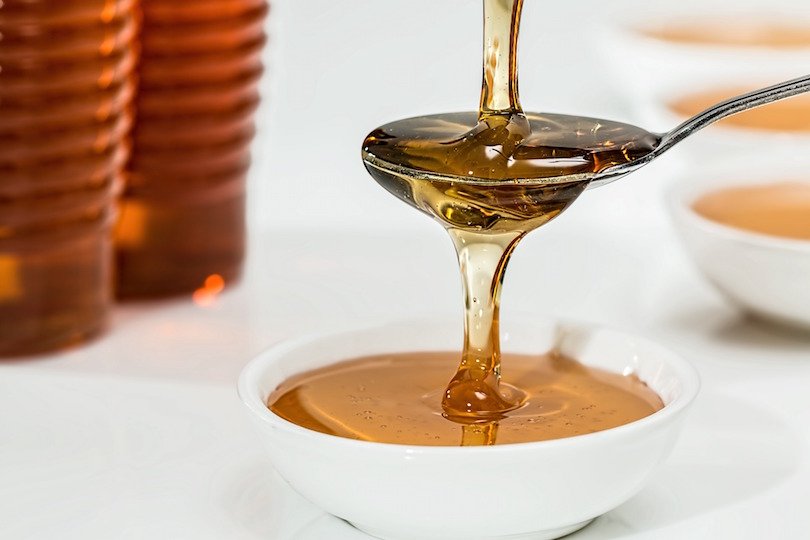
As a common member of the ingredient lineup, you probably have interacted with glucose on manufactured food more than once. Glucose syrup is greatly used in modern culinary to enhance taste and produce unique food textures. But despite it being one of the most widely used taste enhancers, glucose has travelled a long way. It was developed by Russian scientist Gottlieb Kirchhoff in 1811 using heat and acid. Since then, syrup has gained popularity and is used to sweeten many foods.
Naturally, people always ask any question related to artificial ingredients and glucose with no exemption. How is the sweetener made? Does it have any nutritional value? Is it healthy to consume glucose syrup? Etc. In this article, we are going to explain everything about glucose syrup that you need to know.
What is glucose syrup?
Glucose is a commercial sweetener used in various food products such as cakes, candies, and beers. The syrup is also used as a thickener and a moisture retainer in cooking and baking. Also, the syrup does not crystalize; that is why the breweries are intensively using it to make beers.
Glucose syrup making involves breaking down natural starch through hydrolysis. Hydrolysis is the chemical breaking down of complex starch into simple sugars using heat and acid. After hydrolysis has been initiated, the resulting product is a glucose-rich sweet solution.
To get glucose, manufacturers use wheat, barley, cassava sweet potatoes, or anything that has a high concentration of starch.
Types of glucose syrups
Though they share the same physical properties, these types of glucose syrups have different taste profiles. Here are the types of glucose syrups
Confectioner’s syrup
This syrup is produced by hydrolysis. It contains 19%, 14%, 11% glucose, maltose and maltotriose. The remaining 53% is made of other carbs.
High-maltose glucose syrup
High- maltose syrup is made with amylase. Amylase is a naturally occurring enzyme found in pancreases and saliva. During the processing of high-maltose syrup, the enzyme breaks down starch to form a solution with over 60% maltose. This solution is fairly sweet but not like table sugar.
High-maltose glucose syrup is used as a sweetener and to preserve other foods. It preserves food by absorbing excess moisture hence keeping them dry.

Glucose syrup nutrition value
Glucose is a concentrated source of calories, but it does not benefit the body with other nutrients. A small serving of glucose syrup, such as a spoonful, has over 60 calories with 15 to 20g of carbohydrate.
However, studies show that small traces of calcium and zinc can be found in syrups made from corn. Of course, your body needs calcium for the formation of bones, while zinc is a key role player in silky, soft, and moist hair.
Just for comparison, one tablespoon of granulated sugar has only 13g of carbohydrates, less 55 calories, and minor traces of iron.
Uses of glucose syrup
By now, you have an idea that glucose is a key kitchen ingredient. This versatile sweetener is used to make canned foods, beers, confectionaries, and lemonades. In addition, you will find the syrup used as a preservative and improve the shelf life of some products, as already stated above.
Why is glucose syrup used in the food industry?
This is a highly debatable question between health-conscious folks and top-rated chefs. Nevertheless, in some culinary arts, getting the right food with balanced flavor, attractive and just the right texture requires you to use glucose. Glucose syrups balance food texture, viscosity, and glossiness.
In the commercial production of ice cream, syrup is used to bring out a smooth texture.
Glucose is artificially made using starch, heat and acid, through hydrolysis. The resulting solution is sweet and is used in the baking industry worldwide. Also, glucose syrup is a natural preservative.




